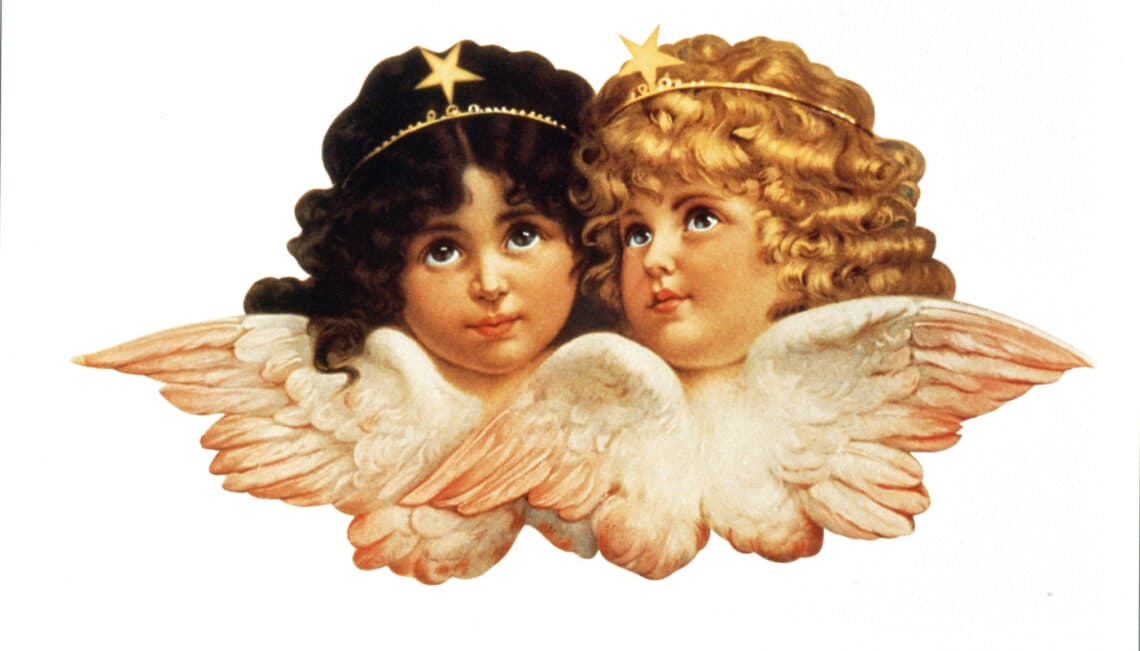
Fiorucci
Fiorucci is a brand founded in 1970 by Italian entrepreneur Elio Fiorucci.
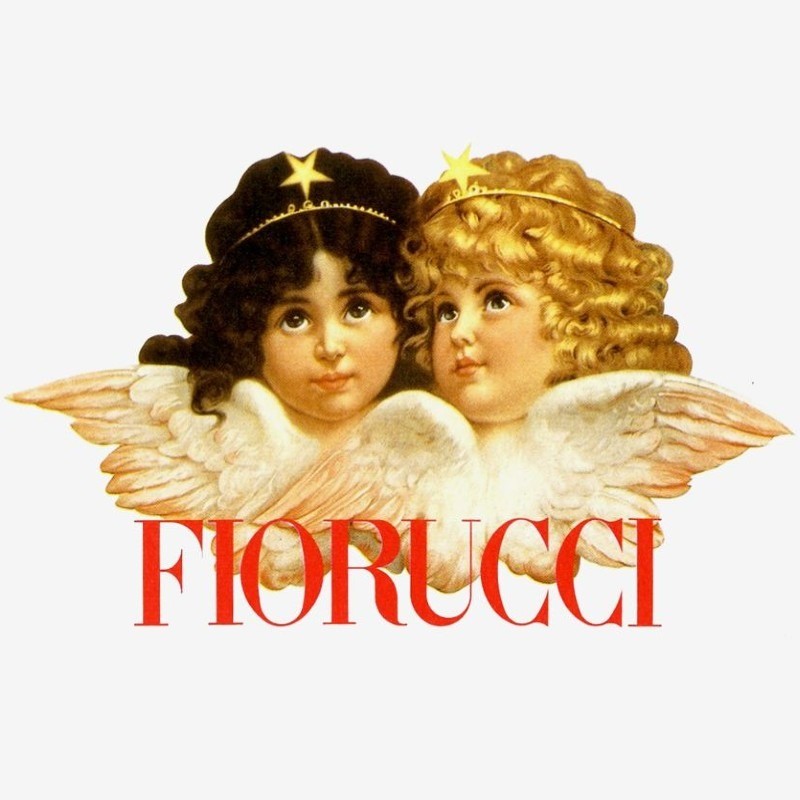
Elio Fiorucci
Born in Milan in 1935, at 17 he joined the business of his father, three little slipper stores in the centre of the city. In 1965, after a «illuminating» travel to Swinging London of the time, he began thinking to bring to Italy a different way to make and commercialize fashion.
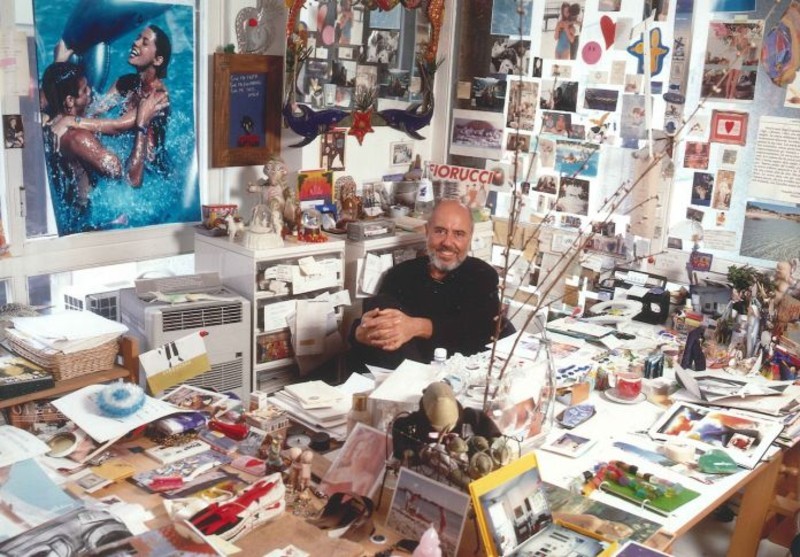
Two years later, on 31st May 1967, in Galleria Passarella, he inaugurated his first store: it was a window on world and included Carnaby Street novelties and hit parades from London and USA. The space, designed by sculptor Amalia del Ponte, was inaugurated by Adriano Celentano, who arrived in a pink Cadillac: it was a great success.
The birth of the brand
In 1970 the name Fiorucci became a brand, with an industrial production and a distribution in Europe, South America and Japan. Its logo was composed by two angels, a Victorian image graphically readapted by architect Italo Lupi and from then remained as symbol of the brand. Meanwhile, the store became a meeting point for all the boys and girls who rebelled against conventions and fought against bourgeois authority and boredom. Thanks to the new generation, the new suggestions, the emotions and the international novelties, the ‘Fiorucci style’ was born.
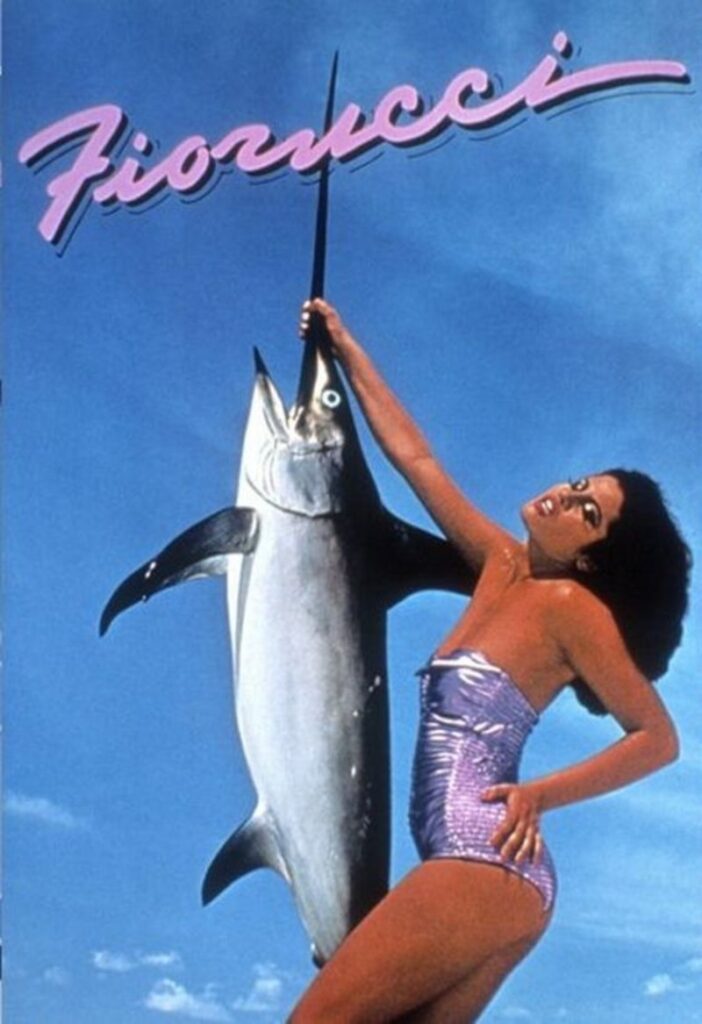
Iconic stores
In 1974 a second store opened in Milan, in via Torino: it was designed by Studio Thomas Maldonado and Franco Marabelli, who has kept on being Art Director for many years. It was a three-level store, characterized by a revolutionary multi sensorial formule: among water fountains and spiced perfumes, apparel, furniture accessories, books and music were sold. In addition, there was a space dedicated to performance, a restaurant which made excellent hamburgers served on dishes branded Richard Ginori and Te alle 5, an antique market where second-hand clothes were sold.
The following year he opened his Londoner store in King’s Road; in the same year Fioruccino was born, a colorful and playful line addressed to kidswear. In 1976 the New York store opened: it was a 1000 square meters space on 59th Street, next to Bloomingdale’s. It suddenly became a cult space, meeting point for the main exponents of New York artistic communities: not by chance Andy Warhol used it as launching point for its magazine Interview. Its interiors were designed by architects Ettore Sottsass, Andrea Branzi and Franco Marabelli.
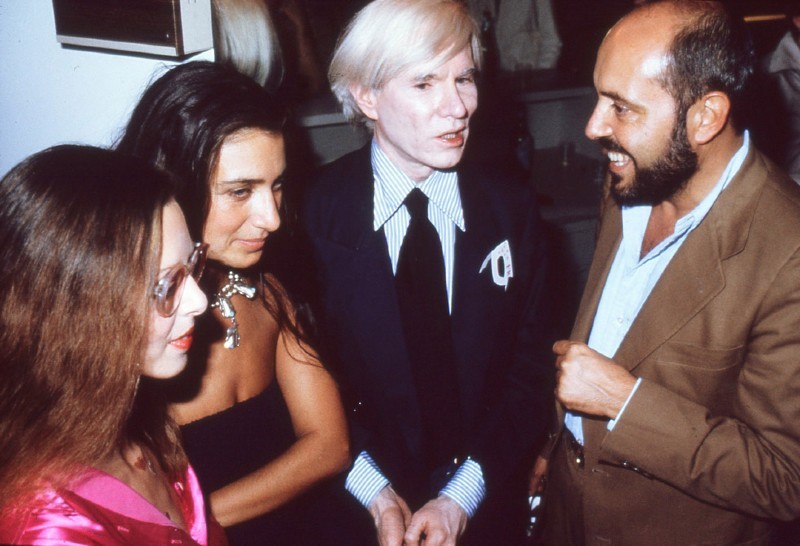
In 1977, when Studio 54, the club connected to disco music and custom phenomenon of contemporaneity, opened, the Fiorucci team, then in New York, coordinated the inauguration and produced costumes designed by Antonio Lopez (who already was a famous artist and an illustrator for Interview covers) for Alvin Ailey dance company. The event was attended by the whole international jet set, from Bianca Jagger to Margaux Hemingway, from Andy Warhol to Grace Jones.
In 1979 the fame of the brand in USA was strengthened by the opening of a new store in Los Angeles, in Beverly Hills neighborhood. During the inauguration, the crowd required the intervention of police: among the guests there was, obviously, the unfaltering Andy Warhol, while the sound was curated by punk band The Screamers.
The partnership with Disney
In 1981 a T-shirts, blouses and sweaters line, illustrated by Walt Disney images, was born. Its success made Fiorucci enter the golden book of American multinational corporation, which recognized its credit to extend Topolino’s success to adults.
1992 was a key year for the brand. Lycra launched by DuPont mixed with denim, so the first stretch jeans labelled Fiorucci was born. It was a five-pockets jeans, shaped on the basis of feminine body, tight and seductive. In the same year Terry Jones (who already made graphic innovation to the brand), founder and director of i-D vanguard magazine, chose Fiorucci to launch its Italian-language magazine. The following year, when the movie Flashdance made aerobic trend explode, Fiorucci launch its ‘gym fashion’, by producing bodies, leg warmers, anti-sweat bands and leggings; furthermore, it celebrated its 15 years of activity with an event in New York Studio 54. The exceptional guest was Madonna, at the time not yet famous.
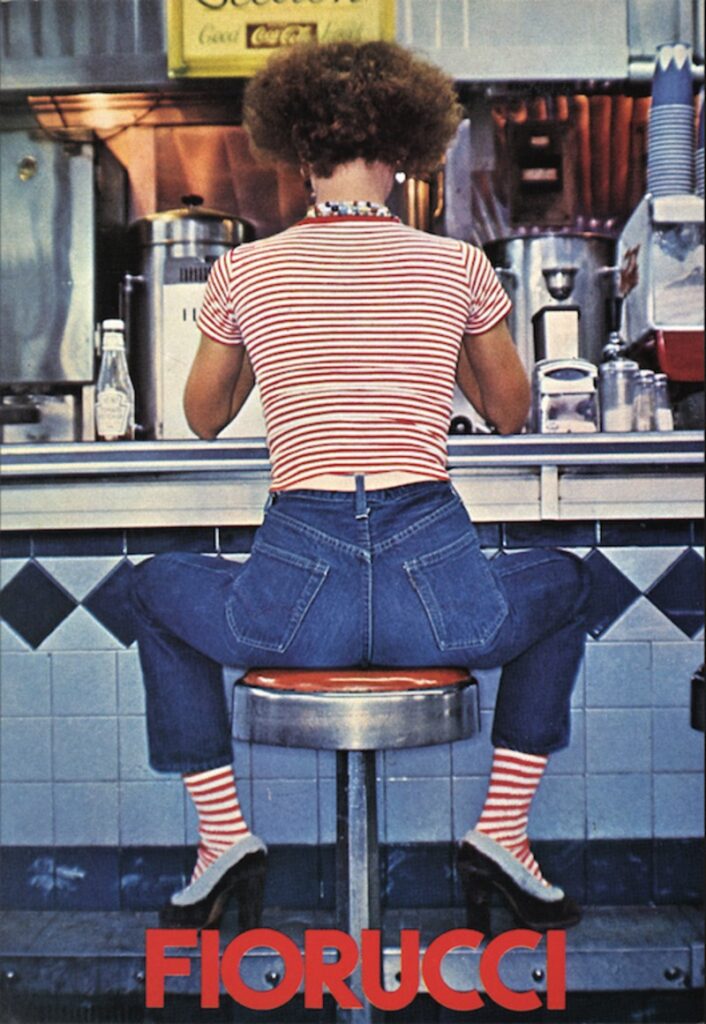
Between fashion and art
Meanwhile the graffiti were covering New York and London buildings and metro trains. Elio Fiorucci wanted to pay homage to this new expression of young subcultures, so he invited in his store a young Keith Haring (among the most characteristic exponents of border graffiti art and of street culture of the time, together with Jean-Michel Basquiat and Richard Hambleton). Haring, in a non-stop happening, painted for a day and a night the interiors of the store. In the same year, Milan’s Marconi art gallery dedicated to Fiorucci brand, which first ennobled the T-shirt white with a graphic, comunicative and celebrative language, the T-show exhibition, which collected T-shirts designed by contemporary artists.
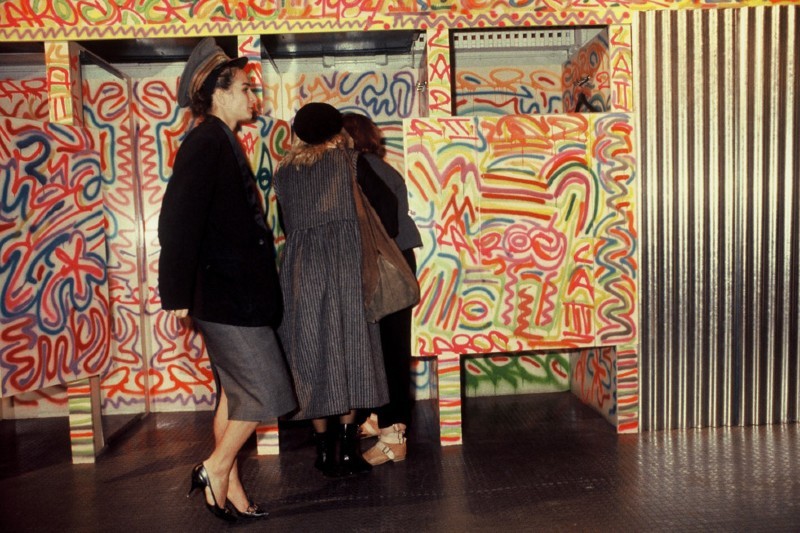
In the ’80s one of the trends was the collection of Panini stickers: Fiorucci decided to ride the trend and to create a photographic book, shaped as sticker album, including the whole history of the brand, with its playfulness (given by comic strips), irreverence (by Hollywood quotes), seduction (by Vargas pin ups), futurism (by electric circuits, robots and flying saucers) and nostalgia (by love fore revival) and its ability to be, sometimes, fetish and sensual. This collection was sold in 25 million envelopes (which stands for 105.000.000 items) and had a great success.
In 1985 Fiorucci signed a license for jeans production with Wrangler, historical denim label Made in USA; almost at the same time, the menswear jeans segment was born (line was called Classic Nouveau). Casualwear expanded and the brand understood the importance of packaging, which was a value added to a product: the new label became the missing connection between jeans and formal clothes and was characterized by a nostalgia for ’50s sportswear. So pendants, labels and pockets became a way to complete the look, as shopping bags, which distinguished because of their creativity.
The acquisition of the brand
In 1990 Edwin International, leader Japanese company in Made in Japan jeans, acquired the brand. Founded and leaded by Shuji Tsunemi, Edwin expanded Fiorucci’s product diversification strategies, by several licenses in Japanese, European, American and Asian territories. From then Fiorucci, Fioruccino, Fiorucci Safety Jeans, Fiorucci Time and the angels (figurative brand) brands were property od Edwin Co. Ltd. and Elio Fiorucci ended his partnership with the company.
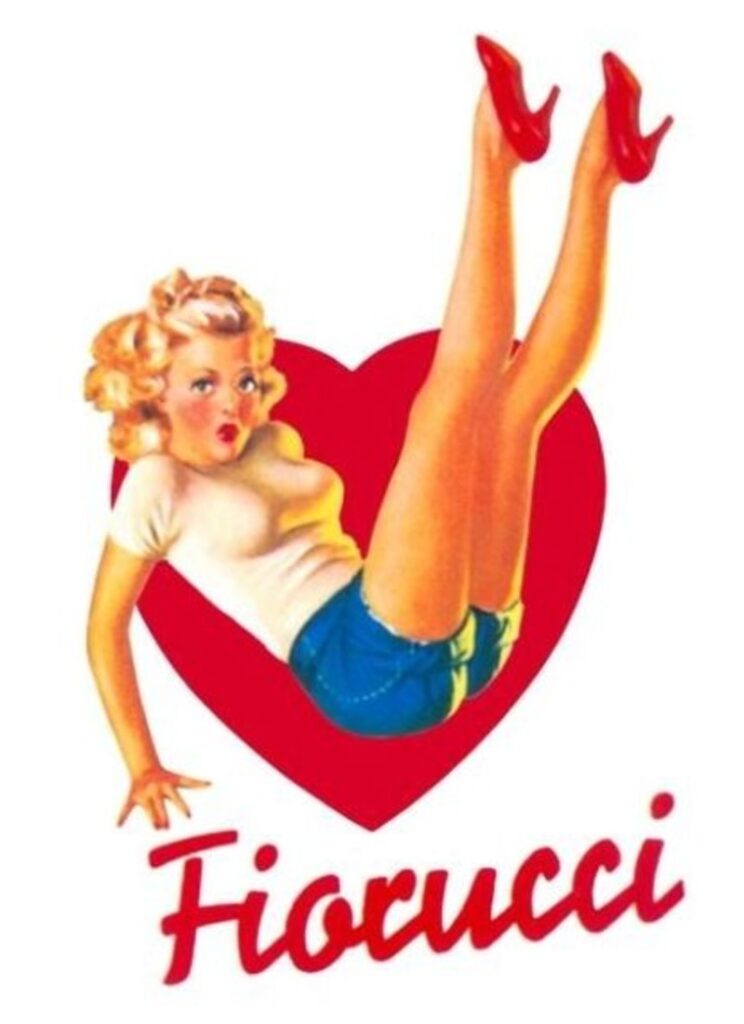
In respect of origins and identity of the brans, style, image and communication were maintained in Milan, in the headquarters which guarder European master-license. The new group decided to start a new path for the company, so it launched the T-Art project: a simple white T-shirt became a creative canvas for evocative images, from institutional angels to sketches coming from drams and fairy tales.
In 1995, in Milan, the Fiorucci: i capi del cuore exhibition was inaugurated: radio announcements and pages on journals invited the fans of the brand to bring with them their inseparable items and to count how they became their cult items. Shot by IED students, who curated the exhibition in their Design Gallery, many fioruccine answered the call.
Pink handcuffs
1995 was the year when Fiorucci made sensation because of an advertising campaign for Fiorucci Safety Jeans line. The photo was shot by Roger Corona and showed the buttock of a woman only wearing pink peluche handcuffs. The new accessory-fetish immediately became a cult.
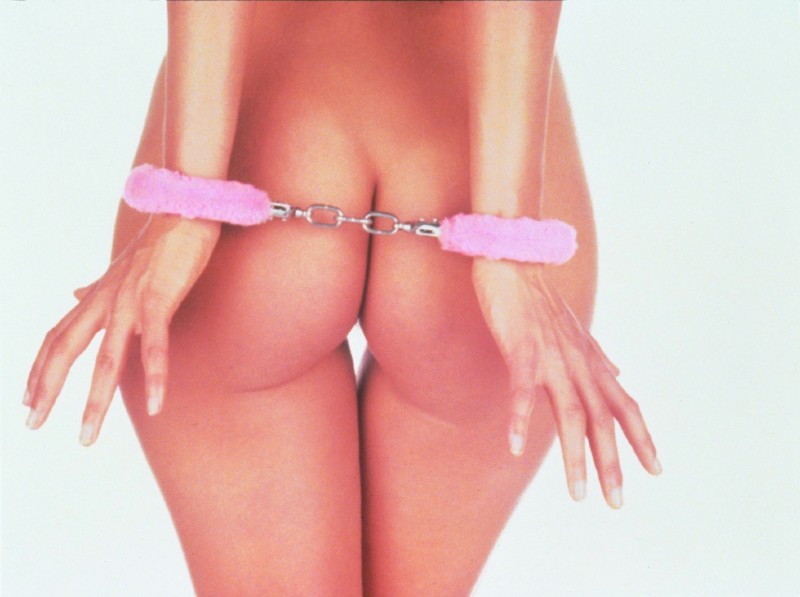
In 1999 a mega advertisement, 30 meters tall, in San Babila, presented Fiorucci’s Lollies, jeans plated and colored in pastel pink, light blue and white, which immediately became the must of the season. It also launched its first perfume (its second one, Fiorucci Loves You, arrived in 2001), which won many prizes: best fragrance, best box (a pair of fluorescent wings and a stars’ fan) and best advertising image (Fiorucci, the only sniff and smile perfume).
The 20002
In conjunction with Milano FreeStyle event, in 2000, the brand was chosen by Camera Nazionale della Moda Italiana as symbol of creative freedom. The CNMI dedicated its the Fiorucci Free Spirit: i sensi della libertà exhibition, which was held at the Arengario, in Milan, and consisted in a tribute to the history of the brand.
In 2005 the Fiorucci Story book, edited by Mondadori Electa, was published: it retraced its history by graphic and photographic images.
In 2007 an exhibition by Gianni Canova was inaugurated at Triennale. Its title was Anni settanta, il decennio lungo del secolo breve and it chose fioruccismo as symbol of costume of a time. The fitting was by Franco Marabelli and the texts by Gianluca Lo Vetro: it consisted in a collection of images and celebrities which marked the history of the brand.
In 2009 the home collection was born: it included colorful, funny and coordinable accessories. A few later, the Fiorucci Design Office moved to its new headquarters, in Viale Premuda: it was a 1000 square meters space which included a space for creativity and a showroom for items of the brand.
In 2009 menswear causal line was born. In the same year, a partnership with BasicNet Group, for a footwear collection Fiorucci by Superga, and a capsule collection with K-Way were born too.
2011 marked a new path for the brand, thanks to the partnership with Ittierre S.p.A., which the license for the production and distribution of womenswear collection was given to. Furthermore, others licenses were signed for accessories. Eventually, in July, a rubber watch, with interchangeable wristband, was launched: it immediately became the must of the season. It was born by the collaboration with the brand Hip Hop, by Binda Group.
In 2022 the brand was completely acquired by Dona Bertarelli, who already was a minority shareholder. The philanthropist decided to revamp the brand, helped by new CEO Alessandro Pisani and new Creative Director Francesca Murri. So they completely reorganized online shop and social medias, aiming at presenting the first new collection in September 2023 and at increasing worldwide distribution of the brand, focusing on the European market.
Revamping also consist in the creation of Casa Fiorucci, a place promoting partnerships with other brands and production of items different from apparel, which, in the years, made the brand famous.
The strength of Fiorucci
The strength of the brand is its identity. And just because of it Fiorucci managed to keep itself young – riding trends for more than three decades – and to satisfy consumers’ desires. When stores didn’t know the ideas of total look and lifestyle yet and when young guys started to show their need for behavioral, social and existential changes, the Fiorucci store in San Babila, in Milan, became their reference point. The only one, in the collective greyness. It was the first Italian mini multi-brand department store, which used to sell not only clothes and accessories, but also gadgets, oddities, food and beverages, and which used to offer a special atmosphere, given by music, perfumes and magic of entertainment and transgression.
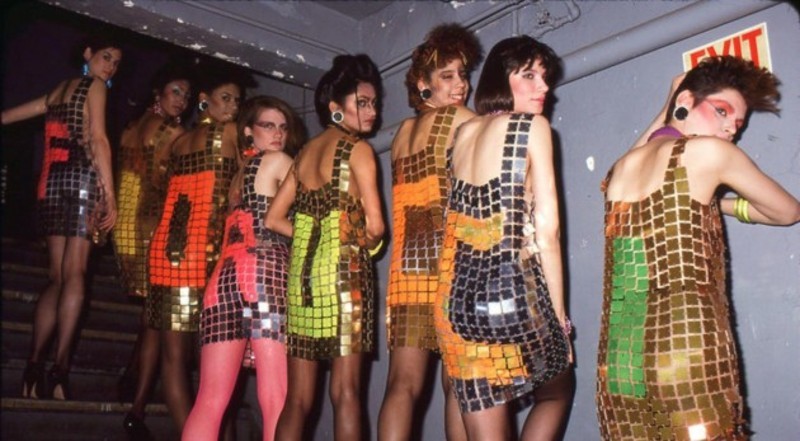
Generous in abundance of ideas, provocative and ironic in communication, revolutionary in presentation. Fioruccismo, as it has been defined, isn’t a style bounded to the creativity of a single person, but a philosophy, a different way to perceive reality and to see things, imagined and reinvented simply following a culture deprived of every taboo.
You may also like:
Contacts
To read the item in Italian click here.

